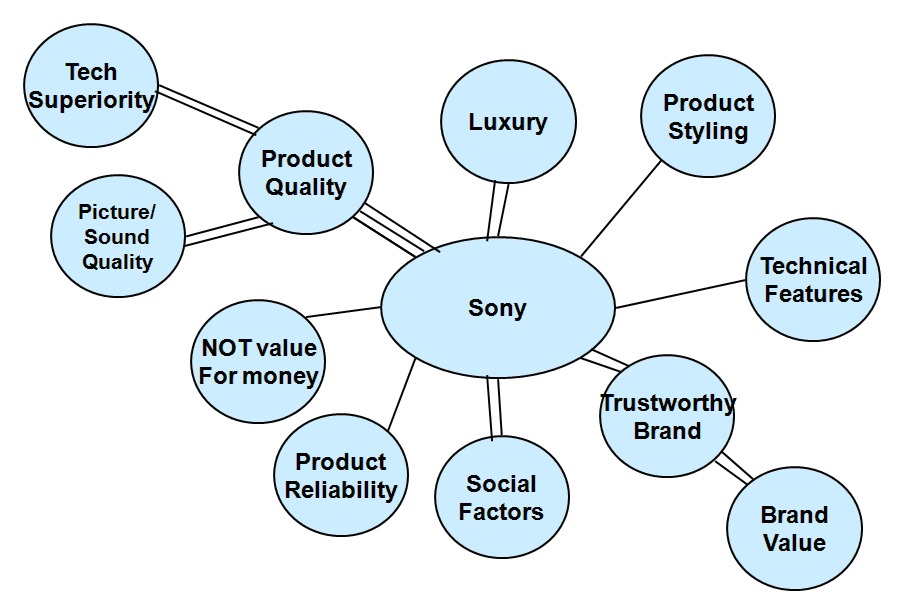
- brand audit meaning
- Difference Between Brand Audit and Marketing Audit:
- a standout example of Brand audit
- Brand Audit Steps and Framework
- Helpful Brand Audit Worksheets and Reports
- Brand Audit Tools and Techniques
- Components of a Standard Brand Audit Report
- Why do we need to do a Brand Audit?
- Is it essential or just nice to have?
Is your brand achieving its objectives, or has it fallen somewhat behind? When did you last examine or assessment your brand’s position or strengths in the market relative to your competitors?
A brand audit is a check-up for your brand’s health aimed at identifying problem areas, increasing profits, and uncovering new opportunities for innovation.
It is presented as a critical tool for managing different business life cycles effectively, and it encourages action before it’s too late to adapt or improve.
In this post, we explore the concept of brand audits, their importance, strategies, tools, and examples, illustrating how they can enhance your brand positioning and help you achieve greater success in the market.
brand audit meaning
A brand audit is a thorough examination of a brand’s current position in the market compared to its competitors and a review of its effectiveness.
According to Modern Branding:
A brand audit is an examination of a brand to discover its sources of brand equity. It helps companies understand how consumers view and interact with their brand and products.
Brand equityis the intangible value associated with a brand. For example, we pay more money for a famous brand product because it has more equity in comparison to other similar products without a brand.
We can do a brand audit of our brand or competitor brands. Brand audits are most valuable when conducted on a regular basis.
A brand audit offers valuable insights for enhancing your brand and maximizing its effectiveness.
In this process, you can pinpoint inconsistencies in your brand’s identity and user experience, shedding light on gaps in your marketing strategy. For instance, you might discover the need to target specific customer groups or prioritize certain social media platforms preferred by your audience.
Moreover, undertaking a brand audit can elevate how your brand is perceived, setting it apart in the competitive landscape. It provides a valuable opportunity to rally your team, fostering a deeper understanding of your brand’s values, objectives, and vision.
At the end of the brand audit process, you will have a bird view of the whole brand’s aspects and details.
A brand audit reveals both strengths and weaknesses within your brand portfolio and highlights market opportunities and threats. It facilitates alignment between your brands, business objectives, target audience, and competitive landscape.
We will dive into the steps of brand auditing and explain how to do it on a framework.
Difference Between Brand Audit and Marketing Audit:
Both brand audits and marketing audits are valuable tools for businesses, but they focus on different aspects. Here’s a breakdown of the key differences:
Marketing Audit:
- A marketing audit is an in-depth, periodic review of a company’s marketing environment, objectives, strategies, and activities.
- It focuses on identifying problems and opportunities to improve marketing performance.
- It’s an internal process aimed at ensuring marketing operations are efficient and effective.
Brand Audit:
- A brand audit is more external and consumer-focused.
- It assesses the brand’s health, uncovers sources of brand equity, and suggests ways to improve and leverage it.
- It involves understanding brand equity from both the firm’s and consumer’s perspectives.
a standout example of Brand audit
In late 2009, Domino’s Pizza faced significant challenges as the company struggled in a declining market. The sales of their pizzas were dropping as consumers increasingly opted for healthier dining choices or cheaper burger and sandwich options. This situation left Domino’s caught in the middle, with its image of being the fastest and best in delivery losing its appeal. Worse still, consumers began to doubt the quality of Domino’s pizza, undermining its reputation in the competitive pizza market.
To tackle this crisis, Domino’s decided to undertake a comprehensive brand audit. This involved extensive qualitative and quantitative research, including surveys, focus groups, intercept interviews, social media conversations, and ethnographic studies. Through this research, Domino’s uncovered several critical insights. A significant revelation was that many consumers felt that Domino’s pizza tasted like cardboard, which indicated a severe quality problem. Additionally, it became clear that consumers felt disconnected from the brand, perceiving it as impersonal and distant.
The audit revealed a deeper issue: in the eyes of many consumers, Domino’s had lost its identity. They couldn’t see the kitchens, the chefs, or even the ingredients behind the pizza. This lack of transparency and connection led to a sense of betrayal among loyal customers who felt the brand no longer cared about them.
Armed with these insights, Domino’s embarked on a mission to reclaim its brand. The first step was to overhaul their pizza recipes, including new formulations for the crust, sauce, and cheese, which resulted in significantly better taste-test scores. Domino’s didn’t shy away from criticism; instead, they launched the bold “Oh Yes We Did” campaign. This campaign used traditional TV and print media alongside extensive online components to convey a clear message: Domino’s had listened to its customers and made substantial changes.
To further emphasize their commitment to improvement, Domino’s produced documentary-style films showing the company’s CEO and other executives engaging directly with consumer feedback and research. These films showcased the genuine efforts being made to improve the product. They even invited critics from the focus groups to try the new pizza on camera, resulting in positive, enthusiastic responses.
This transparent and authentic approach paid off. Consumer perceptions of Domino’s significantly improved, and by 2010, Domino’s saw a dramatic increase in sales, outperforming its competitors. The brand audit not only helped Domino’s understand the root of its problems but also guided the company in making strategic changes that restored consumer trust and revitalized the brand.
Now, let’s do it step by step!
Brand Audit Steps and Framework
The brand audit process involves two main steps:
- Brand Inventory
- Brand Exploratory
But before explaining the two significant steps of brand audit, consider defining the purpose of the brand audit and writing down what you expect. This step will help you to remain on the pathway and don’t do extra meaningless work.
The brand audit team should focus on the Objectives, scope and framework of the brand auditing procedure.
Let’s dive deeper into these steps with a detailed, narrative approach.
Step 1: Brand Inventory
Purpose: The brand inventory aims to create a complete and current profile of how all products and services offered by a company are marketed and branded. This step is crucial for capturing a snapshot of the brand’s elements and marketing efforts.
Process: To begin the brand inventory, marketers need to catalogue all brand elements in both visual and written forms. This includes:
- Names: Every product and service name is under the brand umbrella.
- Logos and Symbols: The visual identifiers that represent the brand.
- Characters: Any mascots or figures associated with the brand.
- Packaging: The design and information displayed on product packaging.
- Slogans and Trademarks: Taglines and legally protected brand elements.
- Product Attributes: Key features and benefits of each product.
- Pricing: Strategies and structures for how products are priced.
- Communications: All forms of messaging, including advertisements and social media.
- Distribution Policies: How and where products are sold.
To visualize this information, companies often set up a “war room” where all marketing activities and materials can be displayed. This helps in seeing the big picture and identifying how consistent and effective the branding efforts are. For instance, software pioneer Red Hat created a wall with all its marketing materials to ensure consistency across different mediums and campaigns. This approach revealed surprising insights about their branding consistency and areas for improvement.

Outcome: The brand inventory results in an accurate, comprehensive, and up-to-date profile of how all products and services are branded. It highlights the consistency of brand elements and the overall marketing program. Additionally, it provides a comparison with competitors, identifying points of parity (similarities) and points of difference (unique features).
Rationale: The brand inventory is valuable for several reasons:
- Consumer Perceptions: It suggests what consumers might think about the brand elements.
- Consistency Check: It identifies any inconsistencies or redundancies in branding.
- Foundation for Further Research: It sets the stage for the brand exploratory phase, providing a base of knowledge upon which to build.
Step 2: Brand Exploratory
Purpose: While the brand inventory provides a supply-side view, the brand exploratory focuses on the demand side. It aims to understand what consumers think and feel about the brand, uncovering actual perceptions that may differ from the company’s intentions.
Preliminary Activities: Several activities can be useful for initiating the brand exploratory phase:
- Review Existing Research:< Dig through previous studies and reports relevant to the brand. These may contain valuable insights that have been overlooked.
- Internal Interviews: Talk to internal personnel, including past and current marketing managers, to gain diverse opinions about the brand and its competitors. These interviews can reveal hidden insights and potential misconceptions.
Research Techniques:
- Qualitative Research: This involves methods like in-depth interviews, focus groups, and ethnographic studies. These techniques help explore consumer perceptions in detail, providing a nuanced understanding of their thoughts and feelings.
- Interpreting Qualitative Research: Consider factors like direction, depth, and diversity of responses. Specific questions provide narrow information, while open-ended questions yield broader insights.
- Quantitative Research: Surveys and data analysis are used to assess brand awareness and the strength, favorability, and uniqueness of brand associations. This phase often follows qualitative research to quantify the findings and make them more actionable.
- Conducting Quantitative Research: This involves assessing brand beliefs and behaviors, examining attitudes towards the brand, and comparing these with competitors.
Mental Maps and Core Brand Associations:
- Mental Maps: These visually depict all significant brand associations and responses for a particular target market. For instance, asking consumers what comes to mind when they think of the brand can reveal core associations.
- Core Brand Associations: These are key aspects or dimensions of the brand, serving as the basis for brand positioning and identifying points of parity and points of difference.

Outcome: The brand exploratory phase provides a clear picture of consumer perceptions, uncovering both positive and negative associations. This detailed understanding helps in developing strategies to enhance brand equity.

Combining Both Steps for Effective Brand Positioning
Brand Positioning and Marketing Program: With insights from both the brand inventory and exploratory, companies can:
- Determine Current and Desired Brand Image: Understand the existing brand knowledge structures and define the desired brand positioning.
- Align Marketing Strategies: Develop marketing programs that strengthen the desired brand associations and address areas of weakness. This involves creating consistent and impactful messaging that resonates with consumers.
Critical Considerations for Positioning: John Roberts, a top marketing academic, suggests that ideal brand positioning should align with four key considerations:
- Customer Reality: What customers currently believe about the brand.
- Customer Value: What customers will value in the brand.
- Firm’s Current Messaging: What the company is currently saying about the brand.
- Firm’s Future Goals: Where the firm wants to take the brand.
Balancing these considerations ensures that the brand positioning is credible, valuable, consistent, and forward-looking.
Helpful Brand Audit Worksheets and Reports
Quality and Procedure of Brand Audit depends on your objectives; based on your intention, you can Work on different Worksheets. there is some typical Worksheets for brand assessment:
- Market Analysis
- Brand Positioning
- Target Audience
- Brand Message
- Competitive Analysis
- Brand Credentials
- Point of Differentiation (POD)
- Marketing Communication
- Brand Traits
- Brand Measurement (Metrics and KPI)
Also there is some tools and Approach you can consider.
Brand Audit Tools and Techniques
Various tools are at your disposal for conducting an effective brand audit. From SWOT analysis to web analytics, each tool offers unique insights into different elements of your brand.
SWOT Analysis
As mentioned above, SWOT analysis is a foundational tool that enables you to assess your brand’s Strengths, Weaknesses, Opportunities, and Threats. By identifying these key factors, you gain valuable insights into your brand’s internal capabilities and external market dynamics.
PEST Analysis
Complementing the SWOT analysis, a PEST analysis focuses on the external macro-environmental factors affecting your brand: Political, Economic, Social, and Technological influences.
Understanding these broader forces helps you anticipate industry trends, regulatory changes, economic shifts, societal preferences, and technological advancements that impact your brand’s performance and strategic direction.
Brand Positioning Map
A brand positioning map visually represents the competitive landscape within your industry, plotting brands based on critical attributes or dimensions valued by consumers.
This tool allows you to identify your brand’s unique positioning relative to competitors. It helps you carve out a distinct market niche and differentiate your offerings effectively.
Brand Personality Test
Brand personality significantly shapes consumer perceptions and emotional connections. A brand personality test evaluates your brand’s traits and characteristics, aligning them with human attributes to create a compelling brand identity. By understanding and refining your brand’s personality, you can engage with your target audience on a deeper level and build stronger brand loyalty.
Surveys, Interviews, and Focus Groups
Feedback directly from your target audience is invaluable in analyzing brand perception and identifying areas for improvement. Surveys, interviews, and focus groups enable you to gather qualitative and quantitative data on consumer preferences, behaviors, attitudes, and expectations.
This firsthand insight enables you to tailor your brand strategy to meet customer needs and preferences better.
Online Reviews and Social Media
Keeping track of online reviews and social media discussions offers immediate insights into your brand’s reputation, sentiment, and engagement.
Through actively listening to customer feedback and addressing concerns promptly, you can foster positive brand experiences, enhance brand credibility, and cultivate a loyal customer base.
Web Analytics
Web analytics tools offer deep insights into your brand’s online presence, website performance, user behavior, and conversion metrics.
By analyzing website traffic, bounce rates, click-through rates, and other key metrics, you can optimize your digital marketing efforts, improve user experience, and drive meaningful engagement and conversions.
Gap Analysis
Gap analysis identifies disparities between desired and actual brand performance, highlighting areas for improvement and strategic focus.
By comparing where your brand currently stands with where it aims to be, you can pinpoint gaps in branding, marketing, and customer experience, guiding targeted interventions to bridge these divides and enhance overall brand effectiveness.
Brand Perceptual Maps
Brand perception maps visually illustrate consumer perceptions of your brand compared to competitors, focusing on essential attributes or dimensions.
These maps offer insights into how your brand is positioned in the market, helping you understand consumer preferences, identify competitive advantages, and refine positioning strategies to meet audience expectations better.
Conducting a comprehensive brand audit using these tools is essential for maintaining relevance and driving growth. By using various analyses and insights, you can refine strategies, optimize experiences, and position yourself for long-term success.
Components of a Standard Brand Audit Report
Conducting a brand audit is essential for evaluating and enhancing your brand portfolio. It includes analyzing various elements of your brand to identify strengths, weaknesses, opportunities, and threats. By ensuring that your brand strategy is in harmony with your business goals and competitive landscape, you can optimize synergy across your brand portfolio.
Brand Personality
Conducting a brand personality audit is crucial for shaping a brand’s identity and appeal. It involves evaluating how the brand is perceived by its audience, competitors, and stakeholders.
Whether your brand is perceived as friendly, authoritative, or innovative, its personality will shape how customers perceive and interact with your brand.
By defining the desired brand personality and collecting data from various sources like customer feedback and competitor analysis, you gain insights into your brand’s current perception and areas for enhancement.
Brand Analysis
You must conduct a review of your brand’s current strategies, initiatives, and overall performance. This entails assessing how effectively your brand is meeting its goals, whether it’s in terms of sales, market share, or brand perception.
For brand analysis, you’ll need to gather data from internal sources, which include your brand assets like your logo, website, brochures, packaging, and advertising materials.
Additionally, feedback from your employees, customers, and stakeholders is crucial. This feedback may cover aspects such as your brand’s vision, mission, values, goals, customer segments, and value proposition.
Gathering insights from these internal sources will provide a comprehensive understanding of your brand’s current strategies, initiatives, and overall performance.
Market Analysis
Market analysis involves a detailed review of the existing market landscape in which your brand operates. You’ll analyze market trends, consumer behaviour, economic conditions, and any other factors that may impact your brand’s performance.
You’ll require insights from external sources such as your competitors, industry trends, market research, customer reviews, and media coverage. Additionally, it’s crucial to gather information and opinions from various stakeholders, including employees, customers, partners, competitors, and industry experts.
You can utilize methods like surveys, interviews, focus groups, online reviews, and social media monitoring to gather this data. Ensure you ask pertinent questions such as identifying your brand’s values, benefits, and attributes, comparing your brand to competitors, and understanding the pain points and expectations of your customers.
Gathering these insights will help you evaluate the present condition of the market to make well-informed decisions for your brand strategy.
Audience Research
At this stage, you have to delve into the demographics, psychographics, behaviors, needs, and expectations of your target audience. Through audience segmentation and the development of comprehensive buyer personas, you can acquire valuable insights into your customers’ identities and the factors influencing their buying choices.
Employing this insight will inform your marketing strategies and facilitate the customization of your brand’s messaging to better connect with your audience.
Competitor Research
Next, you must identify your main competitors and conduct a thorough analysis of their strategies, strengths, and weaknesses. By benchmarking your brand against competitors, you can identify areas where you excel and areas where you may need to improve.
This competitive analysis will inform your brand strategy and help you differentiate your brand in the marketplace.
Brand Position
This step involves identifying your brand’s unique value proposition and the factors that differentiate you. By clearly defining your brand’s position in the market, you can communicate more effectively with your target audience and attract customers who align with your brand values and offerings.
Verbal Identity
It’s crucial to review how your brand communicates with its audience, including the tone of voice and language used, as another stage in conducting a brand audit. To assess your brand’s verbal identity, you need to meticulously scrutinize how your brand interacts with its audience, paying particular attention to the tone of voice and language employed.
This involves analyzing the language style across various communication channels, such as advertising campaigns, social media posts, website content, customer service interactions, and marketing materials.
Visual Identity
Conducting a comprehensive visual identity assessment as part of your brand audit requires a meticulous evaluation of all visual elements of your brand. This includes scrutinizing your logo design to ensure it effectively represents your brand’s identity and values.
Assessing the colors used in your branding palette helps determine if they evoke the desired emotions and resonate with your target audience. Evaluating typography choices ensures they are legible, consistent, and align with your brand’s personality.
Additionally, analyzing the imagery used in your marketing materials, website, and social media platforms helps ensure it accurately reflects your brand’s messaging and resonates with your audience.
Finally, reviewing the overall design aesthetic across various platforms ensures consistency and cohesiveness, which are vital for reinforcing brand recognition and perception.
Brand Messaging
During the brand audit process, you must also evaluate your brand’s key messages to assess how effectively they are communicated to your audience. This involves analyzing the consistency and clarity of your messaging across different channels and touchpoints.
Therefore, you need to examine whether your messages align with your brand values, mission, and overall positioning in the market. Additionally, analyzing how well your messaging resonates with your target audience and whether it effectively addresses their needs and concerns is also significant.
Through this evaluation, you’ll identify areas where your messaging can be refined or strengthened to better align with your audience and achieve your brand objectives.
Brand Equity
Analyzing brand equity involves assessing various tangible and intangible aspects that collectively enhance the overall value and strength of your brand. Tangible indicators may include brand recognition, market share, and financial performance metrics such as revenue and profitability.
Intangible factors, on the other hand, encompass aspects like brand reputation, customer loyalty, and perceived quality. Surveys, focus groups, and market research are commonly used methods to gather data and insights on these aspects.
By analyzing customer perceptions, attitudes, and behaviors towards your brand, you can quantify its equity and track changes over time.
Strengths and Weakness Analysis
Conducting a SWOT analysis provides an understanding of a brand’s internal Strengths and Weaknesses, as well as external Opportunities and Threats. This analysis provides a structured approach to evaluating a brand’s competitive position and identifying areas for improvement and growth.
- Identify Competitors: Begin by researching and identifying your main competitors in the market. Gather information on their products, services, and market positioning.
- Create a SWOT Matrix: Develop a four-quadrant matrix that outlines your brand’s strengths, weaknesses, opportunities, and threats. Prioritize factors based on their relevance and impact.
- Analyze the SWOT Matrix: Examine the matrix for patterns, connections, and areas of competitive advantage or disadvantage. Compare your brand’s SWOT analysis with those of your competitors to gain further insights.
SWOT analysis is a valuable tool for brands to assess their competitive landscape, identify strategic opportunities, and address areas of improvement. Through a comprehensive examination of both internal and external factors, brands can make informed decisions that drive success and sustainable growth in the marketplace.
Evaluation
Now, it’s time to critically assess all the data gathered throughout the brand audit process to discern what aspects of the brand strategy are effective and what areas require improvement.
By meticulously analyzing the collected data, you can obtain valuable insights into your brand’s performance and identify discrepancies between intended objectives and actual outcomes. This guides informed decision-making and strategic alterations.
Recommendations
Following the evaluation, the findings and recommendations derived from the analysis are presented. This step involves summarizing the key insights unearthed during the brand audit and proposing actionable recommendations aimed at enhancing the brand’s performance and strategy.
By clearly articulating the findings and providing practical recommendations, you gain a deeper understanding of your brand’s current standing and the necessary steps to propel it forward.
Implementation Plan
The implementation plan outlines the strategic roadmap for executing the recommended actions derived from the brand audit findings. It delineates the specific steps, timelines, responsibilities, and resources required to implement the proposed recommendations effectively.
By mapping out a detailed plan for implementation, you can ensure alignment across stakeholders, streamline execution processes, and maximize the likelihood of achieving the desired objectives outlined in the brand audit.
All these steps are necessary for a comprehensive brand audit as they collectively facilitate the recognition of areas for improvement, ultimately enhancing the brand development process.
At Dream Farm Agency, we recognize the critical role of brand audits in fostering growth and success. As a dedicated brand development agency, we specialize in providing customized solutions to enhance your brand’s performance and impact.
We assist you throughout the entire brand development journey, from conducting thorough audits to implementing strategic plans.
Even after implementing the recommendations outlined in the implementation plan, we continuously monitor and reevaluate the brand’s performance, strategy, and market dynamics.
Embracing a mindset of constant improvement and adaptability enables you to remain responsive to shifting consumer preferences, market trends, and competitive landscapes, thereby ensuring the relevance and resilience of your brand in the dynamic business environment.
Why do we need to do a Brand Audit?
Various indicators suggest your company may benefit from a comprehensive brand audit. By heeding these warning signs, you can position your company for continued growth, relevance, and success in the business landscape.
Declining Sales or Market Share
If you’re noticing a puzzling decrease in sales figures, a slump in market share, or a drop-off in customer engagement, these could be red flags, signaling potential issues with how your brand is perceived in the market.
A brand audit can be instrumental in diagnosing and overcoming these challenges. It can offer valuable insights into the factors impacting your brand’s performance.
Inconsistent Branding
Inconsistencies in your branding across various channels or locations can lead to brand dilution and confuse your audience. A brand audit can help you pinpoint these inconsistencies and develop strategies to ensure a consistent brand image that aligns with your target audience.
Outdated Brand Image
If it’s been a while since your branding received a refresh, it might be time to reassess its relevance and effectiveness in capturing the attention of your target audience. A brand audit can provide clarity on whether your current branding still aligns with your brand values and speaks to the evolving needs and preferences of your audience.
Competitive Market Changes
The competitive environment is ever-changing as new entrants join the market and existing players refine their branding tactics. If you’ve noticed shifts in your competitive environment, conducting a brand audit can provide insights into your competitive position. Additionally, it aids in pinpointing opportunities to effectively distinguish your brand.
Company Changes
Major shifts within your company, such as mergers, acquisitions, or shifts in business strategy, can impact how your brand is perceived in the market.
Mergers involve two or more companies combining their operations and assets to form a single entity, typically to achieve synergies and enhance competitiveness. Acquisitions occur when one company purchases another, often to expand into new markets, technologies, or capabilities or to eliminate competition.
Conducting a brand audit in the wake of such changes ensures that your brand remains aligned with your company’s new direction and objectives, helping to maintain consistency and relevance.
Negative Customer Feedback
Persistent negative feedback or reviews from customers can signal underlying issues with your brand that need to be addressed. A brand audit can delve into the root causes of this feedback, providing valuable insights into areas for improvement and guiding you in implementing corrective measures.
Planning a Rebrand
If you’re thinking of a rebranding initiative, conducting a brand audit should be your first step. This comprehensive assessment will serve as a crucial foundation for informing your rebranding strategy, ensuring that it connects with your target audience and is in line with your business objectives.
Expansion Plans
Entering into new markets or introducing new offerings requires careful consideration of how your brand will be perceived in these new contexts. A brand audit can evaluate the suitability of your current branding for these endeavors, identifying potential areas for adaptation or refinement.
Therefore, a brand audit ensures that your brand effectively captures the attention and loyalty of your expanded target demographic.
Is it essential or just nice to have?
Maybe you think at the end of the brand audit, we will archive reports, and nothing will change after the audit!
This is the tipping point of the story; if we don’t do it right and don’t use brand audit conclusions in our short-term and long-term plans, a brand audit is useless. It’s Ineffective paperwork if we don’t do it on purpose and don’t use Brand Audit Reports in action.
We do brand audit for different purposes, but there are three main purposes of brand audit:
- To determine how well the brand is performing in the market
- To find out what consumers think and feel about the brand
- To identify opportunities for strengthening the brand
As we mentioned before, in ideal branding teams of companies, abrand audit is a periodic action. We should do a brand audit at least once a year to use outcome reports in strategic planning, keep track of brand health, and stay competitive.
By regularly conducting brand audits, companies can maintain a strong connection with consumers and ensure their brand remains relevant and competitive in the market.
As markets shift, consumer preferences evolve, and competition intensifies, keeping your brand at the forefront of your industry becomes increasingly challenging. This is where a brand audit emerges as a crucial tool for business owners like you.
Understanding Your Brand’s Strengths and Weaknesses
Conducting a brand audit offers invaluable insights into your brand’s core strengths and weaknesses. By scrutinizing various aspects of your brand identity and reputation, you gain a clear understanding of what sets your brand apart and where it falls short.
It empowers you to create focused plans to maximize your strengths and tackle any weaknesses, thus enhancing your brand’s overall effectiveness and resonance in the market.
Identifying Opportunities for Improvement
One of the primary benefits of a brand audit is its ability to unearth hidden opportunities for improvement. By examining your brand’s messaging, positioning, and overall customer experience, you can pinpoint areas ripe for enhancement.
Whether it’s refining your messaging to better resonate with your target audience or optimizing your brand’s positioning to align more closely with market trends, these improvements can translate into increased customer loyalty, engagement, and advocacy, ultimately driving business growth.
Staying Ahead of the Competition
A brand audit equips you with the tools to outpace the competition by staying updated on shifting market dynamics and consumer preferences. By identifying emerging opportunities and potential threats, you can adapt your brand strategy proactively, maintaining the relevance and competitiveness of your brand in the marketplace.
Aligning Your Brand with Your Business Goals
Your brand should be more than just a visual identity; it should be a strategic asset aligned with your broader business objectives. A brand audit plays a pivotal role in ensuring this alignment by evaluating how effectively your brand supports and advances your overarching business goals.
By conducting a thorough examination of your brand’s positioning, messaging, and performance, you can identify areas where alignment may be lacking and take corrective action to realign your brand with your business objectives, thereby maximizing its impact and contribution to your bottom line.
Brand auditing is an indispensable process for businesses seeking to improve their brand identity and market positioning. By systematically evaluating various aspects, brand auditing helps identify areas for improvement and strategic opportunities.
At Dream Farm Agency, we understand the importance of brand development. We offer various Branding services, including brand design, logo creation, brand mascot design, and creative digital solutions to use for implementing brand audit recommendations.
Our comprehensive package covers everything from auditing to implementation strategies, ensuring that your brand receives tailored solutions to enhance its identity and market presence.
Whether you need assistance with refining your brand messaging, updating your visual identity, or executing digital marketing campaigns, our team is here to support you every step of the way.
Contact us today to elevate your brand and drive meaningful growth. We welcome your thoughts and comments below!

Fareena



